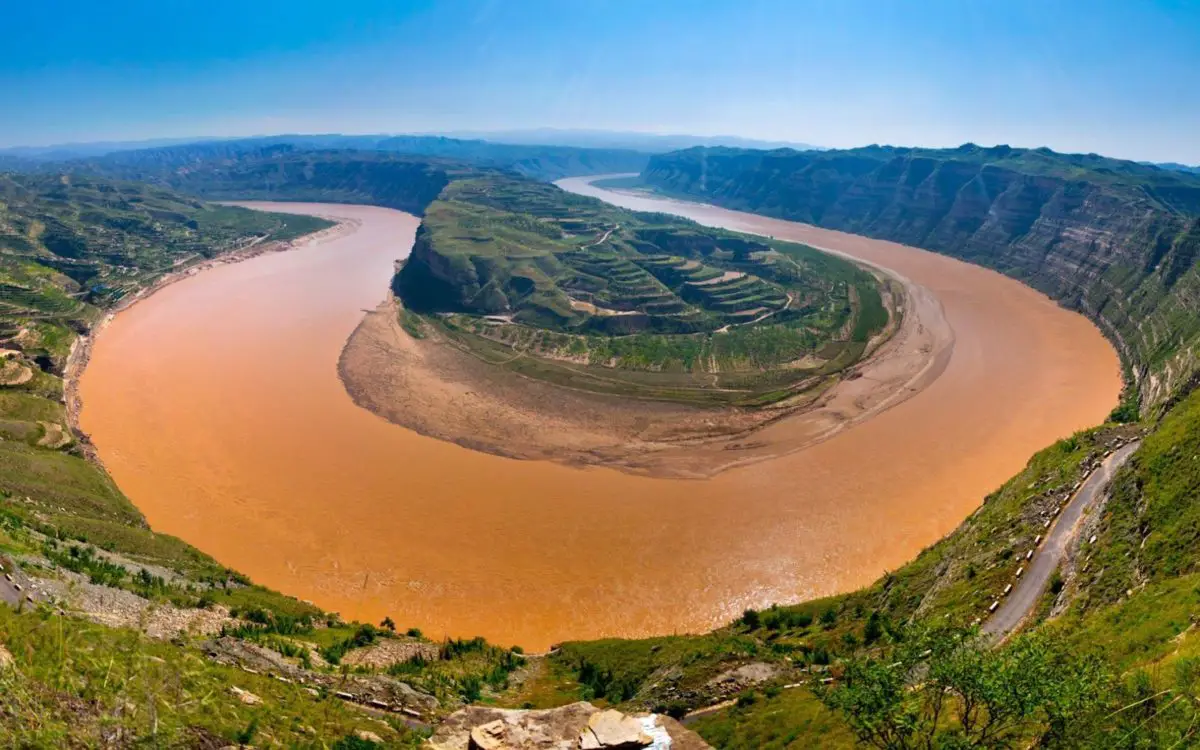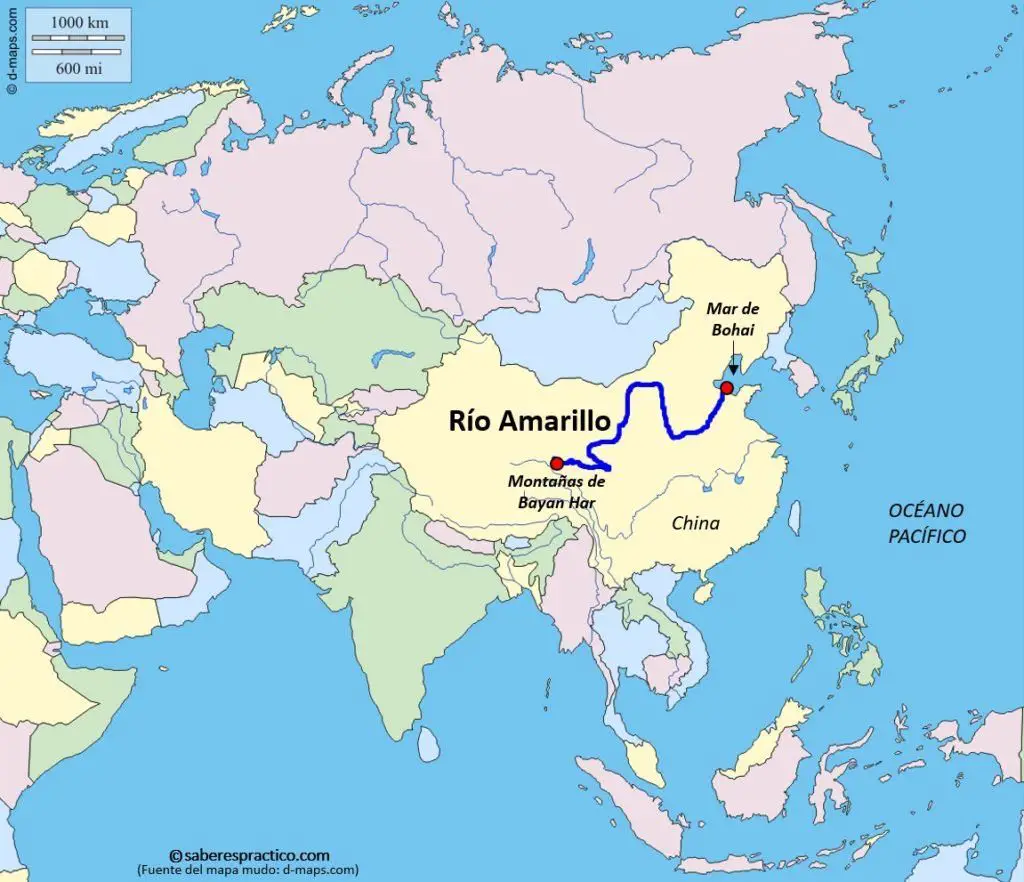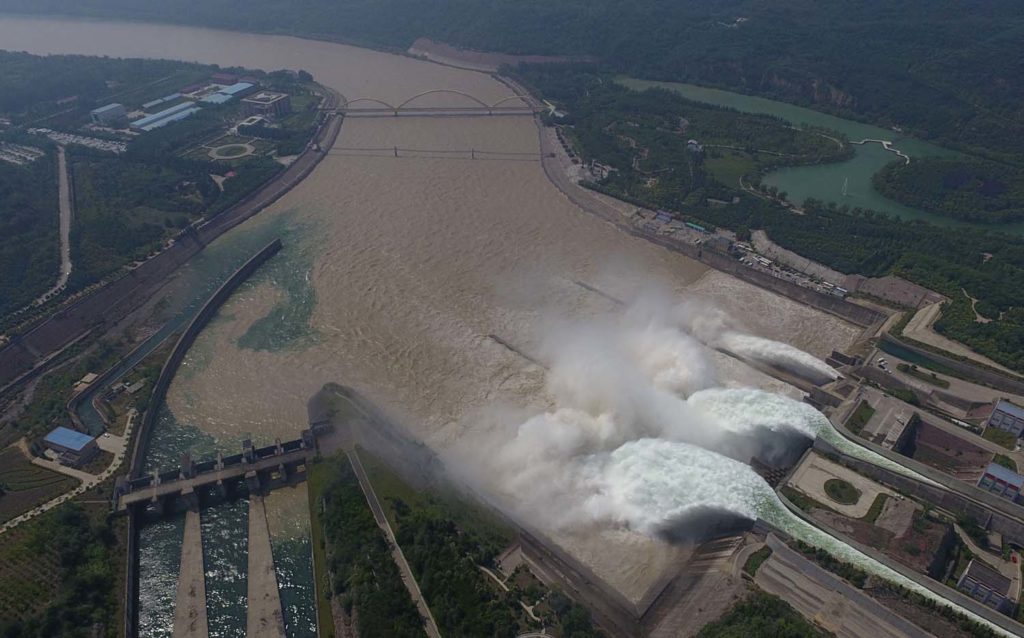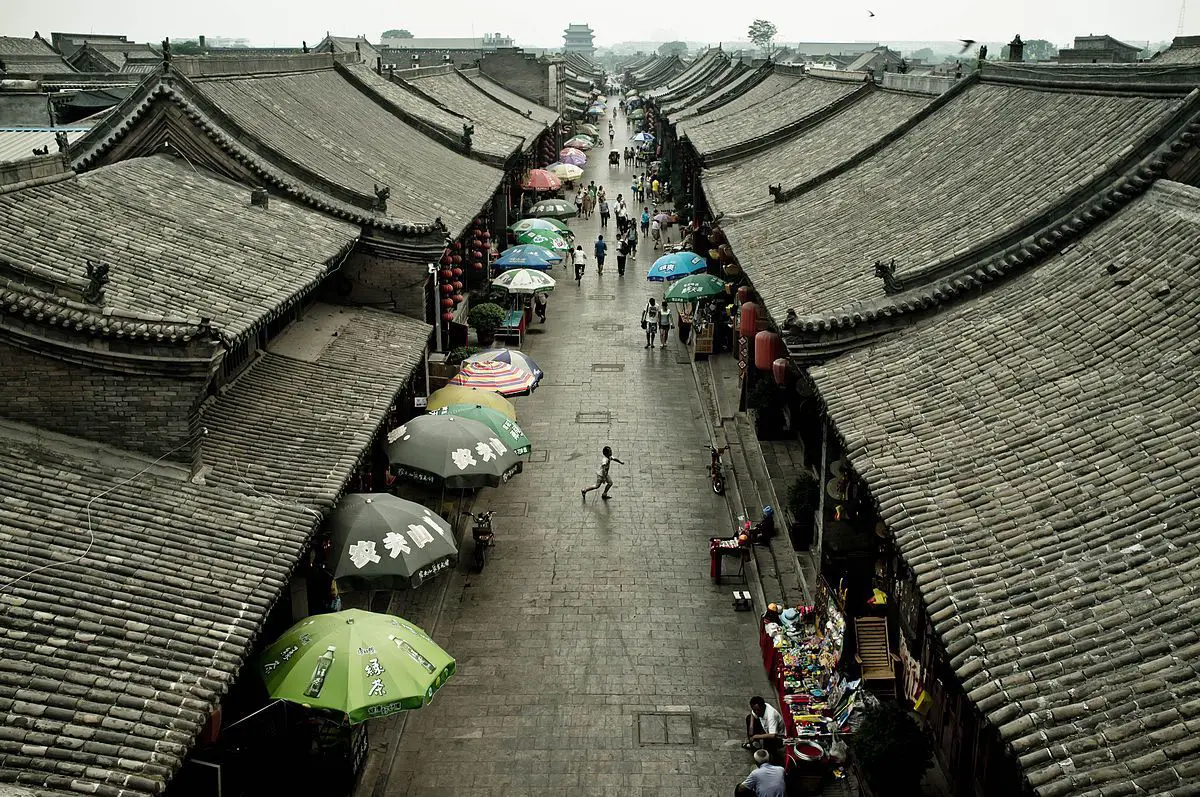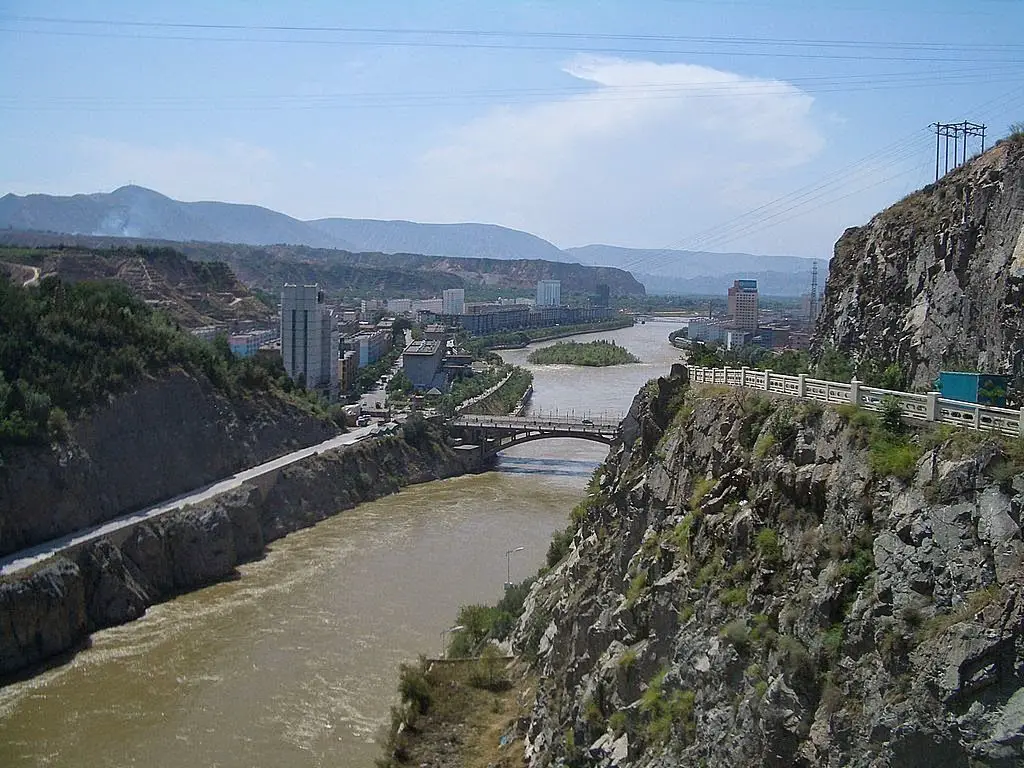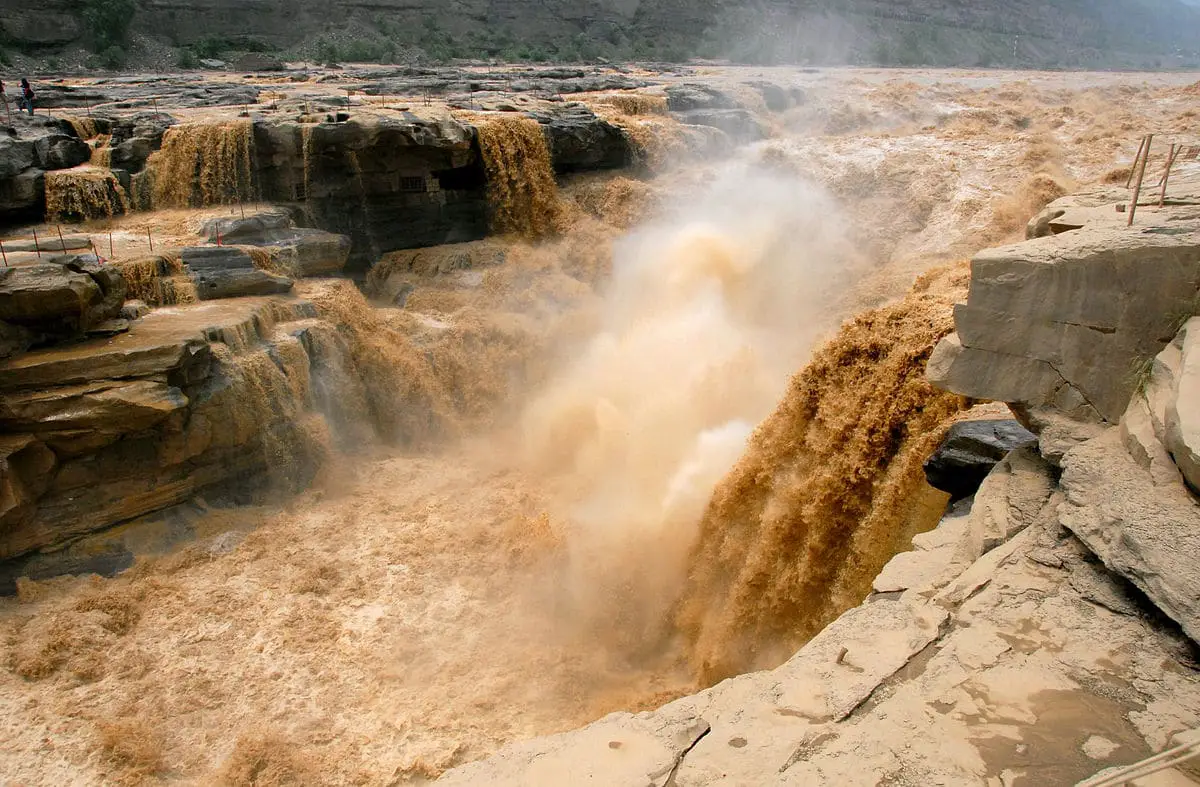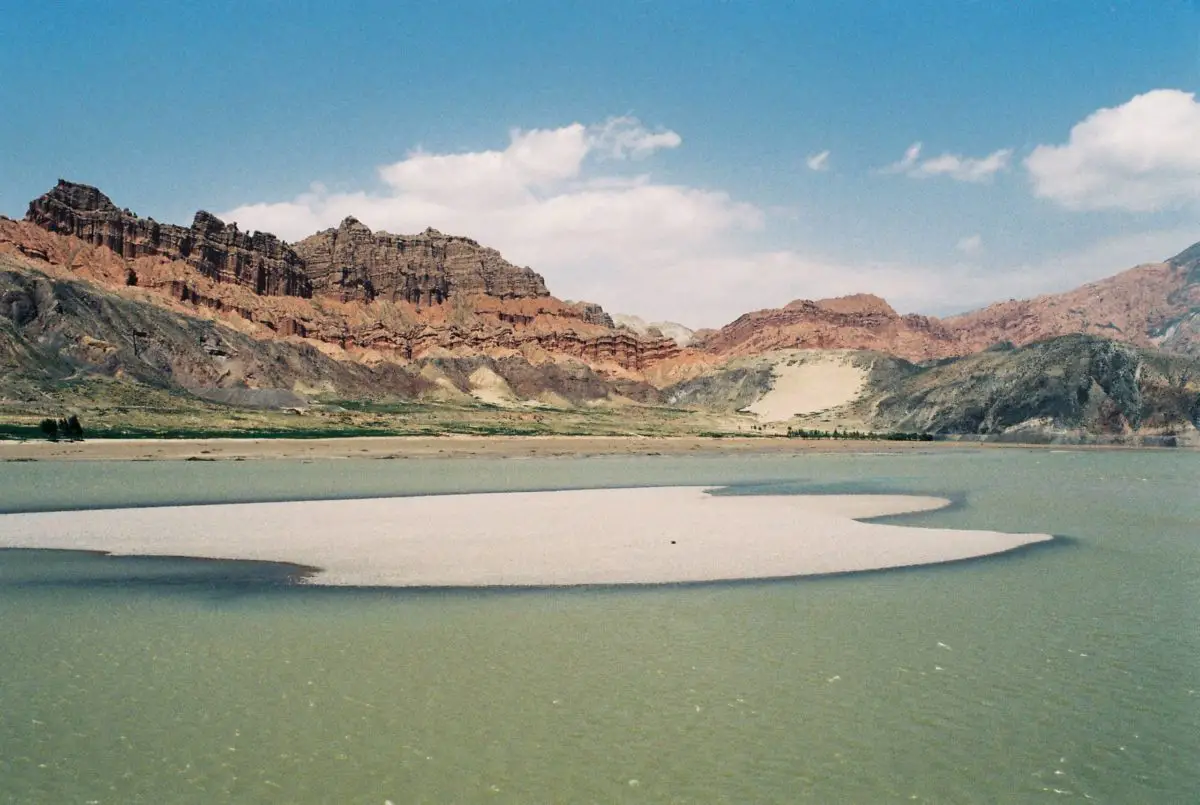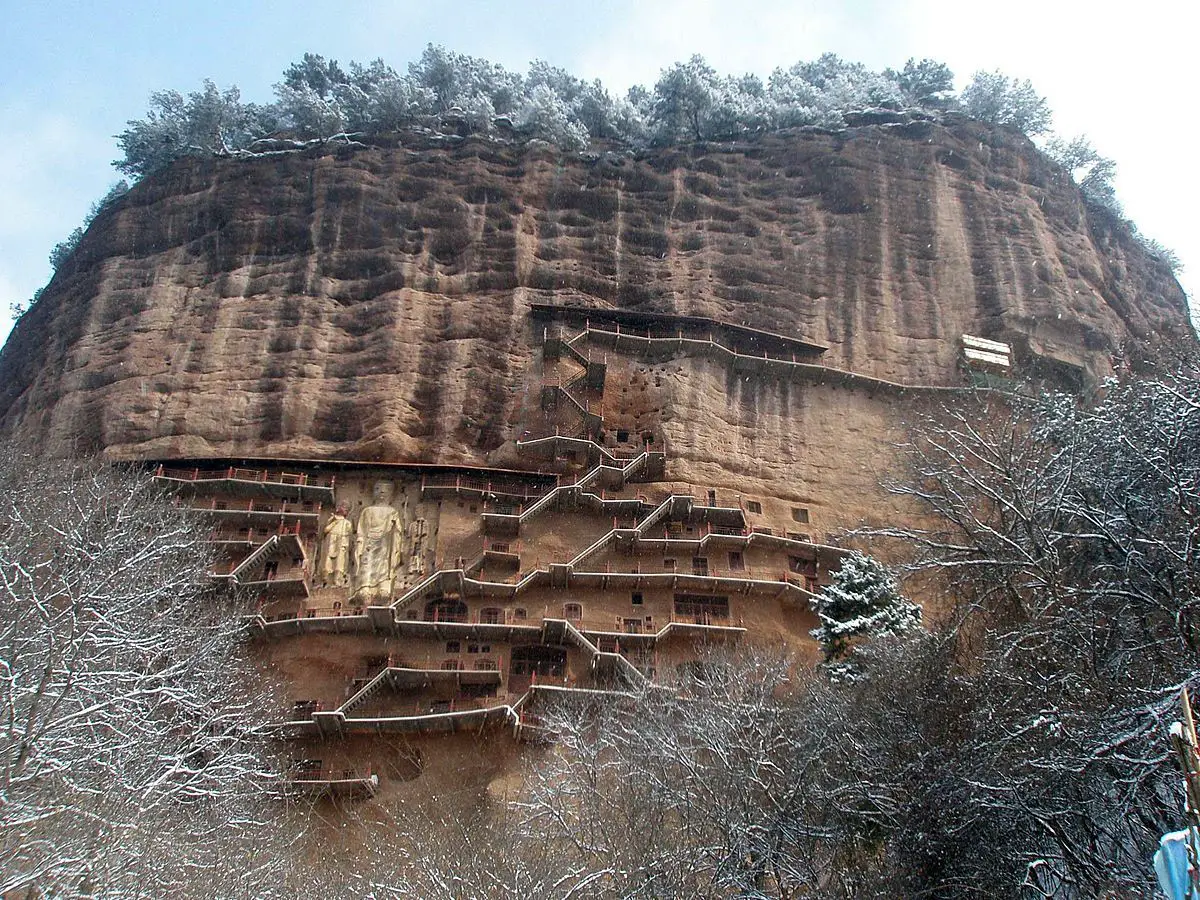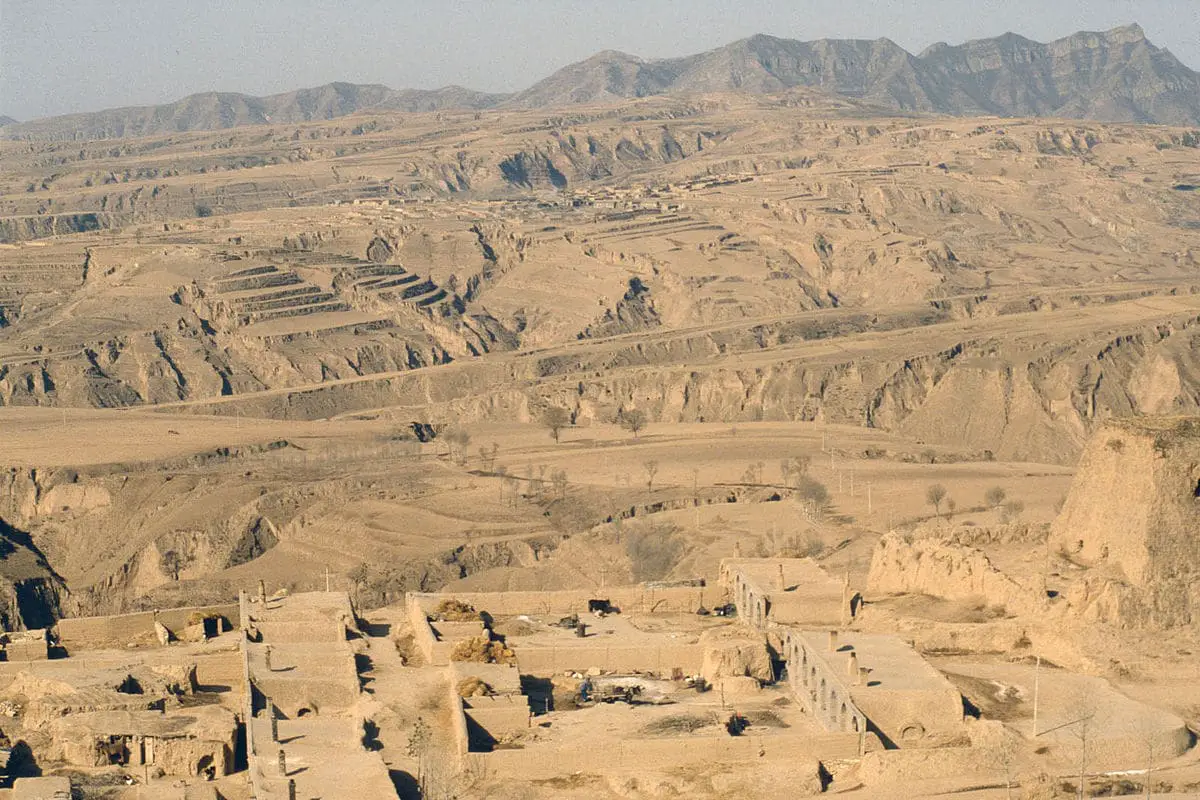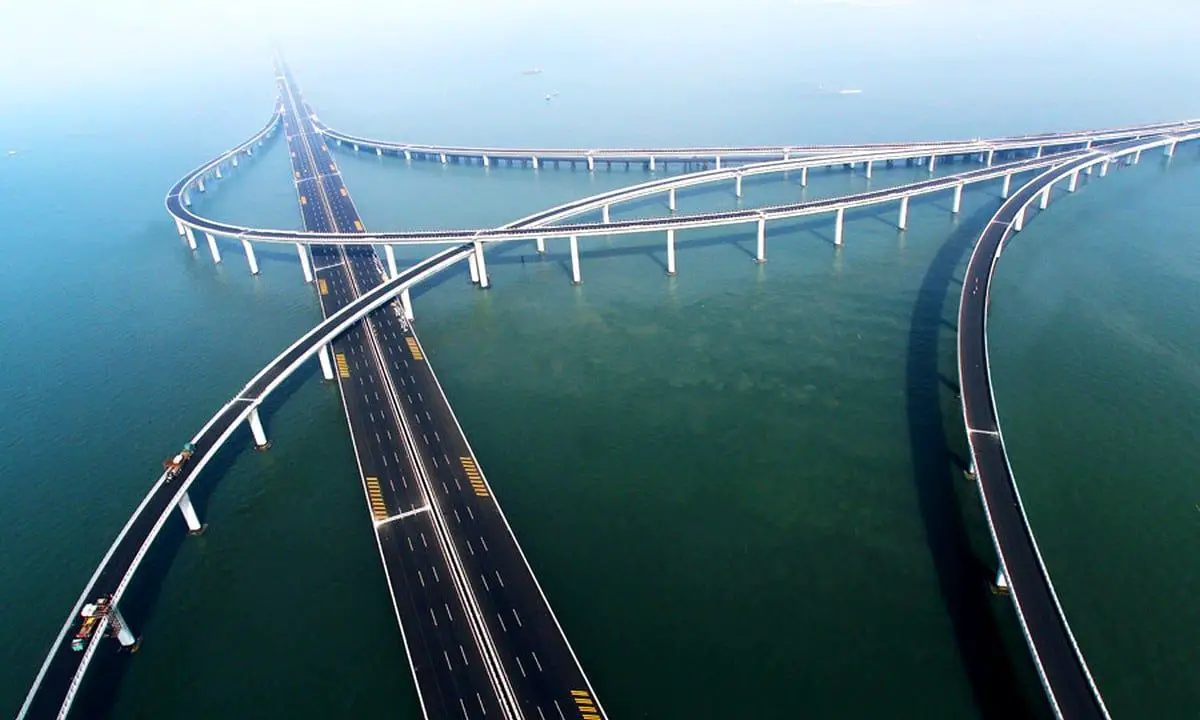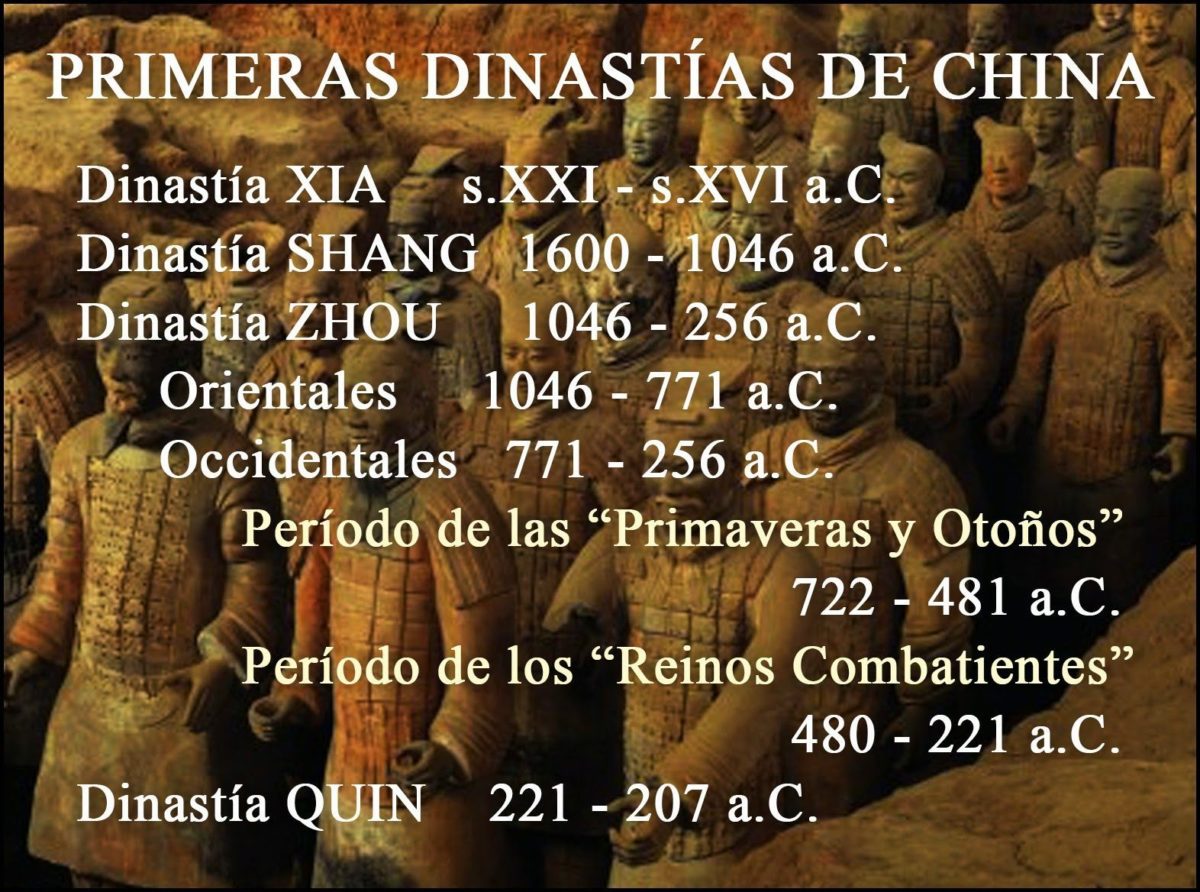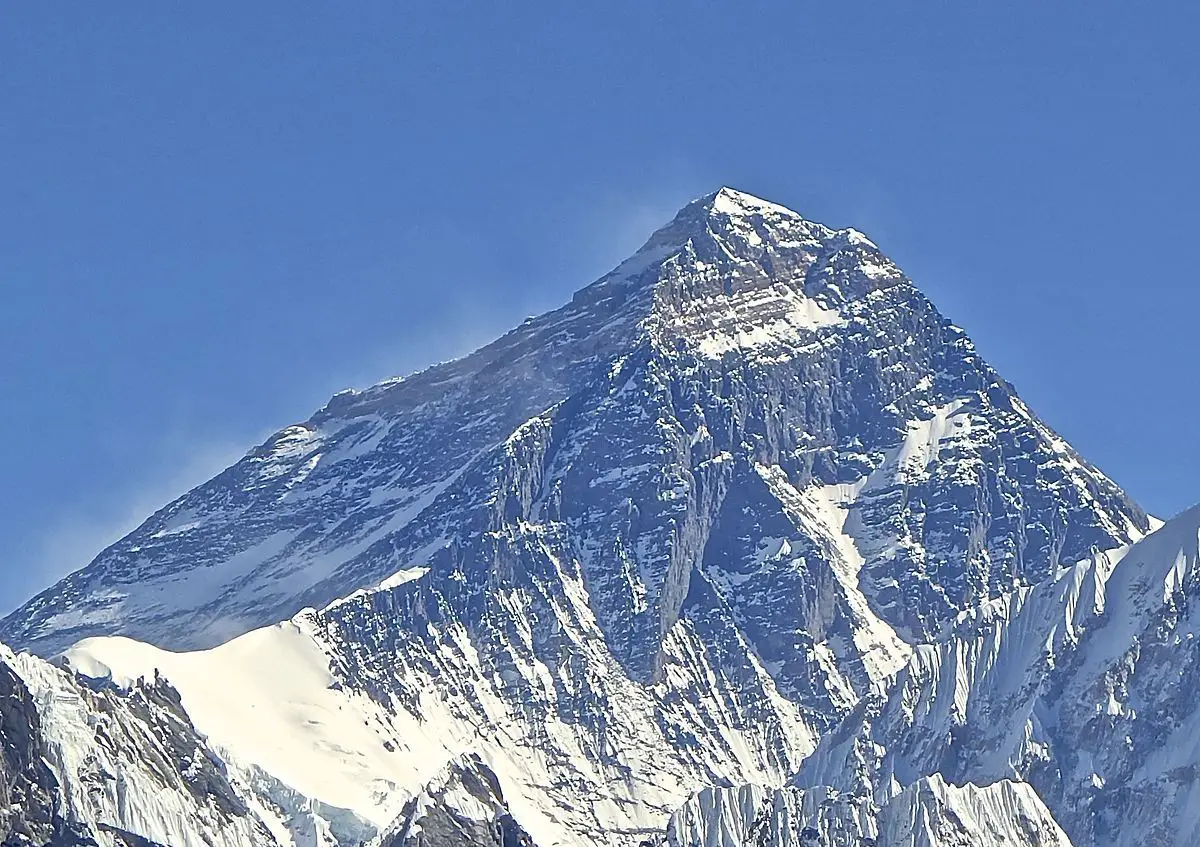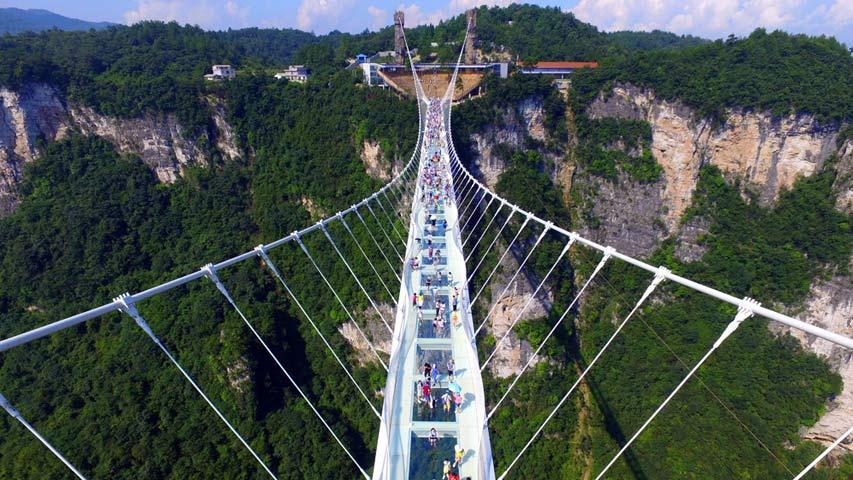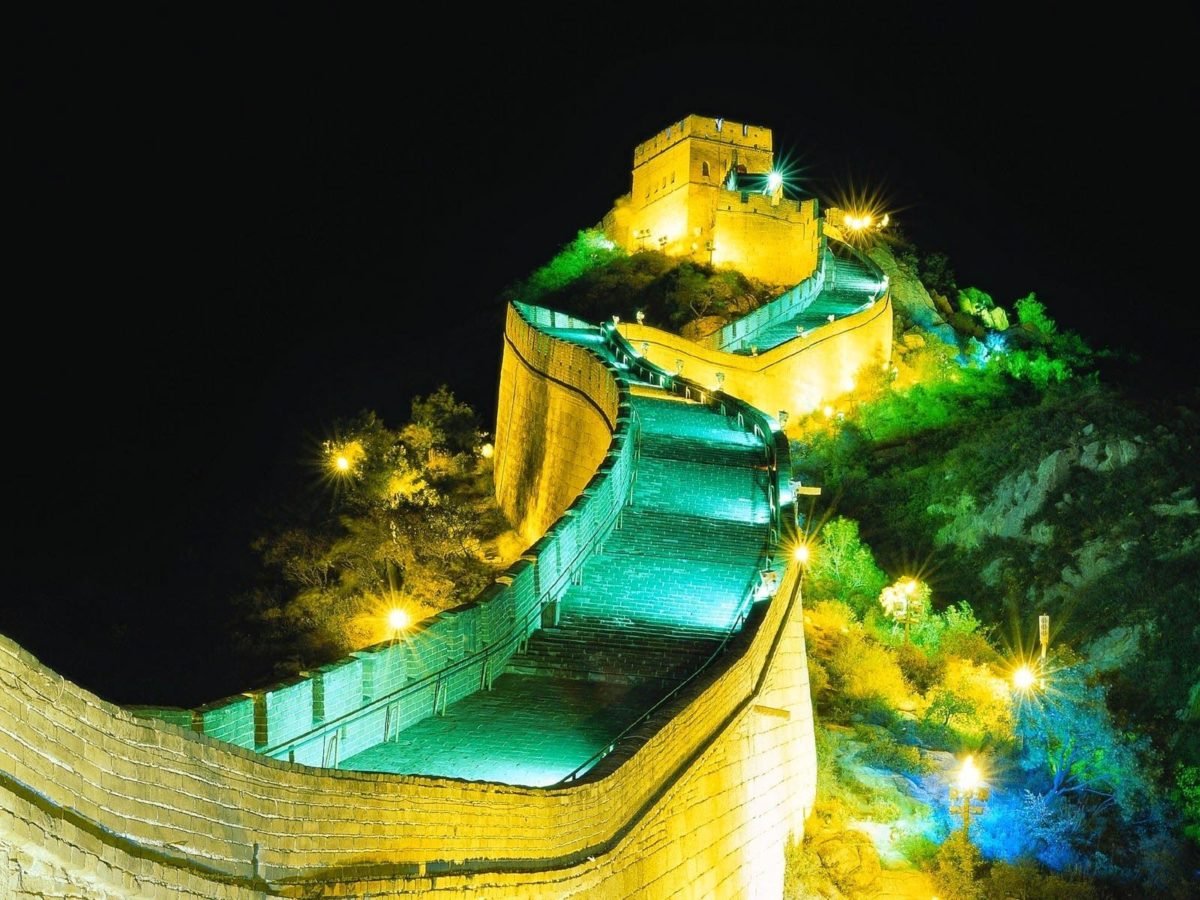Last Updated on August 29, 2023 by Hernan Gimenez
Indice De Contenido
Yellow River, Location, Map, Cities and More
Updated On January 16, 2020
The People’s Republic of China, located in East Asia, has one of the largest rivers in the world, the Yellow River or Huang He, in its native language. It is considered the sixth largest, after the Amazonian (America), Nile (Africa), Yangtze (Asia), Mississippi (America) and Yenisei-Angará (Asia).
Location
The Yellow River is located in the People’s Republic of China, in East Asia. It occupies the third place in terms of land area of the entire planet, with almost 9,600.00 square kilometers and the fourth in terms of water bodies. It adds to others no less important, such as the Mekong River and the Huai.
This river is the second largest in Asia, with approximately 5,500 km and has been of utmost importance for the birth of the Chinese civilization, since in its spaces the main ethnic group of the country, the Han civilization, was formed in northern China.
It is shorter than the Mississippi River, with 6,270 km long and the Yaniséi-Angará, which originally has 4,093 km but, due to its union with the Angará, of 1,779 km, is positioned as the fifth largest in the world.
It is born in the center of China, in the mountains of Bayan Har (Tibet Highlands) and continues its journey until it reaches the waters of the Pacific Ocean, in the Sea or Gulf of Bohai.
Yellow River Map
The course of the river has changed over the years due to the sensitivity of the land, its sedimentation and erosion. Here we have a map with its route from the birth in the mountains of Bayan Har to its mouth in the Bohai Sea, passing through seven provinces and two regions or autonomous communities.
Cities and Regions the Yellow River flows thru
The Yellow River only flows in Chinese territory, as we said, it crosses seven provinces, namely Qinghai, Gansu, Henan, Shandong, Shanxi and Shaanxi and two autonomous regions, Inner Mongolia and Ningxia.
Qinghai
China is made up of 22 provinces, Qinghai is one of them, and its name comes from the lake of the same name, Qinghai, the largest salt lake in China, one of the more than 30 found in the region. Its capital is Xining and is the origin of the Yellow River.
Gansu
The capital of Gansu or Kan Sú is Lanzhou, in northwestern China. Other important regions are the cities of Yumen and Tianshui. Gansu has become popular for being the natural habitat of the famous giant Panda Bear. The Yellow River passes through the city center.
Henan
In its long journey the river also passes thru Henan or Jo Nán, also called the cradle of Chinese civilization. Its capital is the city of Zhengzhou, which is also the most populous. The Yellow River passes thru northern Henan, which has many reservoirs and dams, among others the Danjiangkou, Sanmenxia and Nanwan.
The Banqiao dam collapsed in 1975 after a rain of more than 24 hours that caused serious damage and loss of lives, about 250,000 deaths were registered causing a huge catastrophe in the history of the Yellow River.
Shandong
Shandong means “east of the mountains” in this case of the Taihang mountains. Its capital is Jinan. There, the Mount Tai is located; this is a sacred mountain in China. Going thru the west is the Yellow River, flowing into the Bohai Sea. There, it is divided into two basins, the Hai River in the north and He River in the south.
Shanxi
Shanxi or Shansí is located in the east of the northern region of China; its name means “west of the mountains”, thanks to its location west of the Taihang mountains. Its capital is Taiwan and among its important cities is Pingyao, declared a World Heritage Site.
It is located in the center of the Yellow River valley. Here the river forms borders with Shaanxi on the west and highlights the Hukou Waterfall that has the second largest volume in China.
Shaanxi
Its capital is Xi’an that limits to the east with the Yellow River and with Shanxi and Henan. Among its prominent sites is the Gobi Desert, one of the largest in the world. A must-see in the city includes the Terracotta Warriors declared a World Heritage Site, the Bell Tower and the Drum Tower.
Inner Mongolia
Mongolia is one of the five autonomous regions of China located to the North. Its capital is Hohhot, where the Yellow River flows very close, as also does in Baotou, to return again forming an inverted “U”. This feature gives the region the name of Hetao, which means “surrounded by the river”. It is the most important section for navigation purposes.
Ningxia
Its capital is Yinchuan. As well as Mongolia, this autonomous region has this status because they belong to one or several ethnic minorities. It is located on the Loes or Loess plateau, which in turn is located in the upper and middle course of the Yellow River, which crosses it in its entirety.
It is a mostly desert area, with deposits of oil and coal, among others no less important. The agricultural activities take place in the Yellow River basin and they are known for the cultivation of apples, grapes and watermelons. Its tombs of the Western Xia Dynasty are also famous.
Yellow River Basin
The civilizations of northern China were born in the basin of the Yellow River 30 million years ago. The basin has a length of 1,900 km from east to west and 1,100 from north to south, that is, approximately 752,443 square kilometers in its entirety. It has an extension similar to that of the Orinoco River, in Venezuela, which has 989,000 square kilometers.
Its course has been diverted several times due to flooding and elevation of the surface or bed of the river. In its middle course, large amounts of fine sands, quartz, mud, silt and particles from the vast corn fields settled in hundreds of kilometers are visible.
Being very sensitive to flooding, modern dams have been built to counteract this natural phenomenon, which has caused considerable damage to the original riverbed. Floods are mainly caused by the movement or transport of loess, which is a sedimented geological material.
This sedimentation forms dams and natural dikes that raise the banks of the river, so that the large amounts of water looking for an exit to the sea overflows flooding through the north of China, specifically its plains, forming new canals.
Sections of the Basin
The river can be divided into three sections, the Tibet Plateau, the Ordos Loop and the North China Plain, even when there are different opinions regarding this division.
Upper part or course
In the mountains of Bayan Har, on the Tibet Plateau, the Yellow River is born to then travel to the Loop or Curve of Ordos; there it turns sharply to the south. This section comprises 51.4% of the length of the river with 3,472 km.
In that area two rivers are also born that are of great importance in the country, the 6,300 km Yangtze and the 4,880 km Mekong.
During this journey, it crosses the cities of Qinghai, Gansu and Ningxia. In Qinghai the water is clear and flows freely and it is common to see the formation of crystalline lakes that flow in small canals towards the Yellow River.
After hundreds of kilometers and changes in mountainous reliefs, volume, direction and flow, and its pass through hydroelectric plants and dams, the river enters Gansu again and runs into caves with spectacular Buddhist sculptures on the rocks. Here you will find the Maijishan Caves.
There, before reaching the capital of Gansu, Lanzhou, for a small stretch, the river flows thru Xining, from where the caravans in the past and today the railroad, departed to Lhasa. Through the Gansu corridor and the Wei Valley was the Silk Road, a network of trade routes that connected China with Mongolia, Arabia, Africa, Turkey, Europe, among others.
From there it goes north and crosses a gorge to enter the autonomous region of Ningxia. Here the river enters into a desert region and flows through dams, crop areas and mountains in its road to Inner Mongolia. There, the Hetao plateau is found, dominated by desert and grassland, which connects with other cities in Inner Mongolia.
Continuing on its journey to the east the Yellow River reaches the end of the upper course; there it turns south to penetrate the Loess Plateau.
Middle Course
Between Inner Mongolia and Henan there is a basin of 344,000 km. The flow and sedimentation increase, reaching 92%, making it the river with more sediment in the world. Between mud and sand they reached levels of up to 3,910 million tons in 1933, being the highest so far.
When these sediments are deposited in the slow-flowing parts, the river beds are increased or raised, forming the “rivers on land”.
As it runs south from the Loess Plateau to the Wanjia Dam and the Longkou Reservoir, the river is at its midpoint. Here, another part of the river begins when it turns into a border between Shanxi and Shaanxi. It crosses the Jinshan Valley, suitable place for the installation of hydroelectric power plants.
In this valley is the Hukou Waterfall, the second most important due to its large volume and the area is protected as Hukou Waterfall National Park.
Leaving this region, it passes through Sunji and runs into the Fen River and the Wei to turn east and meet at a three-point confluence known as “geographical point where the land borders of three countries converge” between Sanxi, Saanxi and Henan. From there, it crosses plains, dams, mountains, and ends its midpoint in Zhengzhou, the capital of Henan.
Lower course
From Zhengzhou to its exit at sea, there are more than 780 kms with lots of dikes before reaching the Bohai Gulf. This basin develops in 23,000 km2 and few tributaries.
The silts that have been brought from the middle course form sediments that raise the riverbed. On his subsequent journey it arrives at Jinan City, the capital of Shandong, where the Jiaozhou Bridge is. This bridge crosses the Yellow River.
The high amounts of sediments that fill the lower course of the river, causes the bed to rise causing damaging floods. This has made important the construction of numerous dikes and other projects that have been planned to avoid them.
This area has seen a huge economic boom that has been very positive. However, these same activities have also been counterproductive due to the disorderly growth of industries with the added consequence of things like chemical spills, domestic drains and others waste disposal that have contributed to the contamination of the river.
Importance of the Yellow River in Chinese culture
Thanks to its importance to the Chinese dynasties and for being the place of birth of great inventions such as paper, silk, porcelain, tea, gunpowder, poetry, songs, martial arts, Chinese medicine, among others, the Yellow River is classified as “the Mother River” and the “cradle of Chinese civilization”.
In the past, the surrounding lands were very fertile which facilitated the human life. There were abundant crops, thanks to the rains, as well as the possibility of hunting and fishing.
In the central and lower courses of the river, three different tribes were concentrated that over time mixed and formed the Xia, Shang and Zhou dynasties. This gave them power and turned them into a political, economic and cultural center for that time.
They were the epicenter of important historical events, and a cradle for writers, politicians and scientists who contributed extensively to the development and progress of the region. China became the undisputed pillar of trade with other countries.
The Xía dynasty with Dayu as the first Emperor, was also the first to dredge the river, which affected its ecological imbalance; They developed a lunar calendar, based on the movements or positions of the Big Dipper, giving definition to each month.
The Shang dynasty was characterized by its artistic work with bronze. They also practiced divination, and the results were sculpted in turtle shells and hard bones of animals.
In the Zhou dynasty during the spring and autumn period many advances were made, such as the emergence of a large number of schools, books and great speeches were written. It was the time of the immortal Chinese thinkers, among them Confucius.
While this was happening in China, in other civilizations there were important advances and celebrities such as Plato, Socrates and Aristotle emerged in Greece and in Israel the rise of Jewish prophets.
The Yellow River has been the inspiration of poets, singers, storytellers and painters over the years. For the Chinese, the Yellow River is the spirit of their nation. It is a treasure in ancient stories and mysteries.
Archaeological findings
Very important Neolithic era discoveries have been made, for example that of Pampo, Senshi, where ceramic furnaces, ceramic ornaments, vases, instruments made of stones and bones were found.
In the Yellow River valley, human remains with clear signs of torture and human sacrifice were found after a grave and sacrificial wells belonging to the Shang Yin dynasty, in Honan, were being dig.
As for religious, there is known that the Chinese civilization already believed in the immortality or eternity of the soul, and therefore, the daily articles of the deceased were buried with them so they could use them. Another interesting fact is the bronze plaques they used to write which were painted with brushes or worked with tools.
Recently, in 2016 to be more exact, there were discovered in Shandong what are thought to be the remains of Neolithic people, Longshang, who lived in the Yellow River basin or Huang He, more than 5,000 years ago years.
Archaeologists are amazed by the size and height of these human remains who measure approximately 1.90 meters in height. Excavations began in 2016 in the city of Jinan. In addition to human remains, buildings, tombs and sacrificial wells were also found.
This corroborates the thesis that these areas were very fertile for agriculture and livestock and that these people had access to large food sources such as cereals and pork.
Also years ago, in 2007, remains were found of what could have been a lost city more than 5,300 years ago, which would disrupt the theory that the Xia dynasty is the first to inhabit the river basin.
In the city of Jinsha, near the province of Sichuan, more than 1,000 km away from the Yellow River basin, there were ruins of a city that was estimate may have existed more than 3,000 years ago.
These studies concluded that Chinese civilization was the product of various ancient cultures, other results are expected.
Present
According to studies of Chinese civilizations, the Martial Arts were born during the Xia dynasty thanks to the apparition of weapons made of bronze such as sabers, helmets, axes appeared, which they used for personal defense.
At the beginning of the Zhou dynasty the first battles with spears and military dances were practiced. Military and literary training was encouraged. By the 19th century, the existence of martial arts began to be known in the West and worldwide thanks to the legendary martial arts expert and actor Bruce Lee, now deceased.
Sanda or Sanshou is the new form of Kung fu. It is a full fight with regulations issued by the International Wushu Federation (IWUF) when competing.
Opera or Chinese Theater
The Chinese Theater is defined as “the form of art that synthesizes acting, acrobatics, martial arts, fine arts, music and poetry.” It is a legacy of the ancient culture of China. There are more than three hundred types of Chinese theater or opera and one of the most famous is the Beijing Opera, very popular in the Qin dynasty.
It is characterized by the use of traditional string and percussion instruments that give a continuous rhythm to the whole plot. It is more fascinating from the point of view of representation than that of the literary genre, due to the fabulous, fancy makeup, costly and elaborate costumes.
Music and dance are more prominent, so it is not associated with a realistic drama. They are long-lasting functions where the viewer enjoys a pleasant evening, appreciating the lavish color and imagination of the actors to make believe that what we see is real.
Characteristics
Flora and Fauna of the Yellow River
Although its fauna is not very prolific or varied, it has been possible to count a little more than 150 species of fish, including the spatula fish (psephurus gladius) in Yangtze. Now it is much less due to the high levels of contamination that the river possesses.
Among the mammals, the leopard (panthera pardus) and the sica deer (cervus nippon) stand out. The best-known birds in the region are the common bustard, the Chinese serreta and the European pigargo.
Fish farming or aquaculture is one of the most important economic activities in the river as well as the generation of hydroelectric power in part of the basin.
Relief and Climate
The river has a variety of relief forms throughout its length. On the east, along the coast, alluvial plains can be seen (See article: Purús River) which are populated, and further north, inland Mongolia there are extensive grasslands. To the south, there are hills and low mountain ranges, while in the center-west there are the deltas of the Yellow and Yangtze Rivers.
In the plateaus, because of the altitude, extremely high temperatures are registered, reaching -40 ° F which mean less population. In China is the largest and highest plateau in the world, the Tibetan Plateau, as well as peaks that are considered the world´s highest.
Mount Everest, with its 8,850 meters above sea level, is the highest mountain on earth and is located on the border between China and Nepal. It is a coveted site for experienced mountaineers whose desired goal is to climb to its maximum height.
Almost 20% of the land in China is desert. Among the best known deserts are the Gobi and Taklamakan, to the northwest. The dunes and rocky areas predominate, with a very arid environment, which affects the amount of population.
Bridges over the Yellow River
Just a few months ago in China a glass bridge over the Yellow River was inaugurated. It is 210 meters long, 10 meters high and 2.6 meters wide. Located in the northeastern region, in the city of Zhongwei, it was opened for tourist purposes taking advantage of the spectacular view offered by this immense river. Its length is near to that of the Bridge over the River Thames in London which is 283 meters long and 20 meters wide.
In China the provinces are competing to attract more native and foreign tourists and what better attraction than this impressive and spectacular work of nature, the Yellow River to motivate them to visit China.
The Great Wall of China
In Chinese language Changchéng means “long fortress”. The Great Wall of China is a majestic work of engineering, whose construction is said to have started during the Quin Dynasty, 200 B.C. Its objective was to protect the inhabitants from the attacks of the Mongols.
Emperor Shi Huangdi was responsible for rebuilding and joining the small stretches of walls that had been built previously and by doing that, was able to create a 7300 km long wall without adding the ramifications and subsequent constructions that go from the Korean border to the desert of Gobi.
Its height is approximately 6 to 7 meters and its width from 4 to 5 meters. It is visited annually by millions of tourists from around the world and was declared as a World Heritage Site in 1987 by UNESCO and as one of “The new seven wonders of the modern world” in 2007. (See article: Río Iguazu)
Currently, much of the Wall is deteriorated even though the government has shown concern with maintaining, repairing and renovating it creating programs to protect the historical and cultural site.
Song of the Yellow River
This river has not only being full of mysteries and interesting data. A song was also composed in honor of this impressive river and the customs and stories that developed in its basin.
The Yellow River song was composed by Xian Xinghai, who was inspired by a poem by Guang Weiran in 1939. This poem emerged from a patriotic sentiment in the wake of the Second Japanese War (1937-1945) fought between China and Japan. This poem is recited at the celebration of the New Year in China.
The poem asked that China arm itself to defend its territory and their lives when in 1938 they fell under Japanese invaders. The poem was converted into a cantata to rejoice the spirit of the Chinese soldiers.
Chinese tales
Did you that…
- Yellow River is also the name of a song that became a great hit by singer Jeff Christie in the 70s. The song refers to the life of a soldier who was in the Civil War and when it ended, desperately wanted to return to his home in Yellow River County. But the question is which Yellow River refers to since that war happened in the United States and the song is English.
- Its yellow color is due to the mixture of the loess with the water when it is dragged downstream with high concentrations of silt and sand.
- It supplies 12% of the water consumed by the inhabitants of the country and 15% of the crops and its contamination level is of 33.8% with level 5.
- Thanks to its continuous and harmful floods with unfortunate balances of lives and resources lost, is it also known as the “pain of China”
- There is a “corpse fisherman” due to the large number of bodies that disappear under the waters of the river. Authorities say the majority are suicides or victims of murders that go unpunished since the evidence in the river’s currents is erased.
- It has turned red because of the contamination and spills of pigs’ blood !!
- Approximately ten million workers died during the construction of the Chinese wall.

